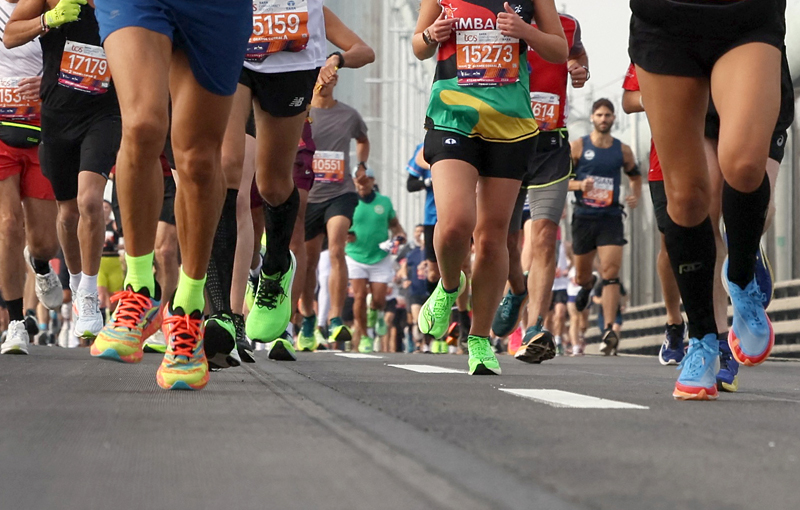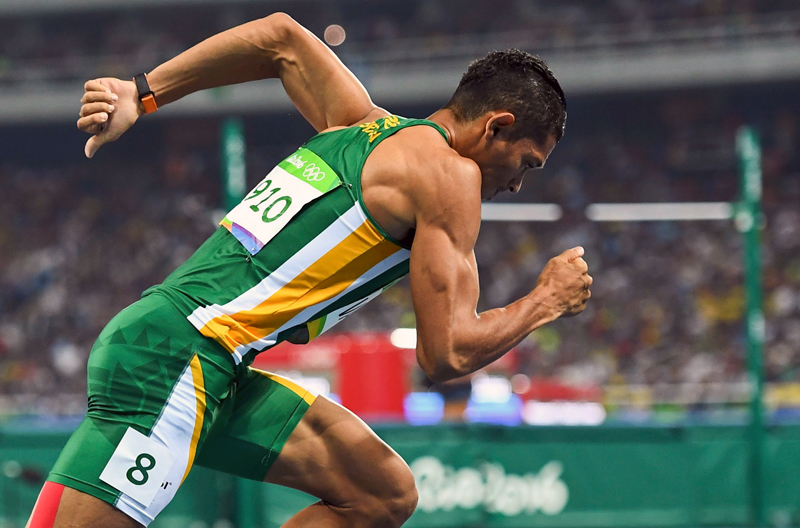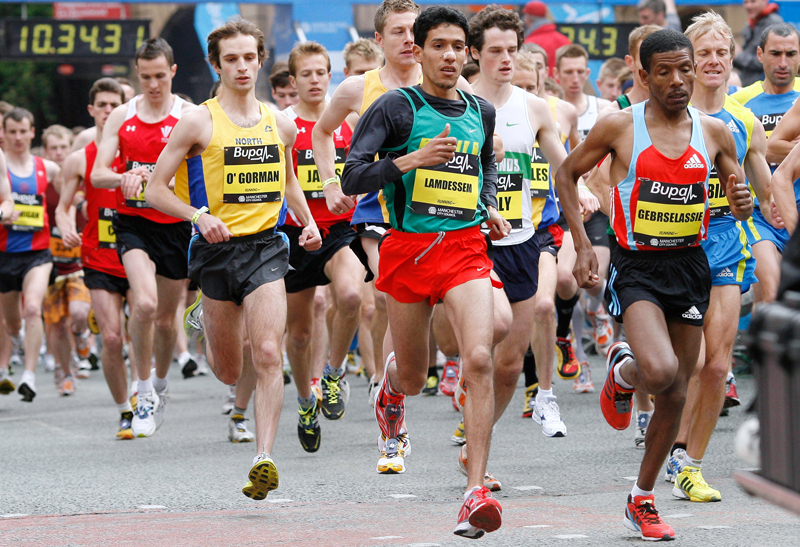The step-up
Joint motion: hip, knee and ankle extension
Sports applicability: all sports, particularly those involving running
Conditioning benefits:
- General. The step-up is a great exercise for all the leg muscles, although it is often overlooked in favour of the squat. It is an advanced exercise when heavy weights are used and should then be performed only by well-conditioned athletes. However, when performed with light weights or simply using body weight it is suitable for virtually all sportsmen and women.
- Sport specific: There is a school of thought that crowns the step-up as the king of compound leg weight training exercises. This is based on the fact that the exercise uses an independent leg action which closely resembles the movement pattern of the leg muscles when running and jumping.
Start position
- Take the bar from the squat rack (which should be set up to allow the bar to be removed at shoulder height). Position the bar so that it is supported evenly across the back of your shoulders, using a pad or towel for cushioning if necessary. Hold the bar with an evenly-spaced over-grasp grip;
- Stand tall and keep your back in neutral alignment – ie not arched or rounded – with your feet shoulder-width apart and toes pointing straight ahead or slightly turned out;
- Keep your ankles, knees and hips in alignment.
Action (see below)
- Step up onto a suitably strong bench by placing the foot of your lead (stepping) leg flat onto it;
- At the same time, remove your non-stepping leg from the floor and bring it up to place the foot parallel to – and shoulder-width apart from – the stepping foot on the bench;
- Step back down with your lead foot and bring the other foot back down to join it to complete one repetition.
Action Steps 1 & 2
Training tips
Do look straight ahead throughout the exercise and keep your back in neutral. Make sure you step up and down in a straight line without wobbling from side to side, which can place strain on the ankle, knee, hips and back.Don’t use a padded bench as this will provide an unstable base. The bench should be high enough to allow you to step up from a maximum 90Oangle at the knee when the stepping leg is on the bench. A lower bench will result in a shallower knee angle and the ensuing action will recruit less buttock and hamstring musculature.
Start with 4 x 10 repetitions on each leg at 50% of 1 repetition maximum (1RM), to a ‘one-up, one- down’ count to condition yourself safely to the exercise. Take 90 seconds’ recovery between the 8 sets.
Variations and sport specific exercise progression
Step-up drive (with or without barbell): This variation can make the exercise more sport specific and is particularly relevant to those engaged in dynamic running and jumping sports. This variation should be performed in one smooth movement. Begin as described above but, on stepping up onto the bench, ‘drive’ the non- stepping thigh up to a position parallel to the floor, while rising onto the toes of your stepping leg. Next, place the non-stepping foot back down onto the bench, then step back down to the floor as described above. Note: because this exercise should be performed at speed, only light weights should be used if using a barbell. However, speed should not be achieved at the expense of technique. Perform 3 x 10 repetitions on each leg, taking 90 seconds’ recovery between your 6 sets.Grounded foot step-up drive: This progression is great for developing power endurance in the quadriceps of the stepping leg. For this exercise you leave the stepping leg ‘grounded’ on the bench as you complete your reps. The drive is initiated from the extension of the thigh of the grounded leg and the upswing of the non-stepping thigh to a position parallel to the ground. Coordinate movement of arms with legs – ie opposite arm to leg. Perform 3 sets of 30 seconds on your right leg followed by the same on your left. Take 30 seconds’ recovery between sets and while changing legs.
John Shepherd MA is a specialist health, sport and fitness writer and a former international long jumper
You need to be logged in to continue reading.
Please register for limited access or take a 30-day risk-free trial of Sports Performance Bulletin to experience the full benefits of a subscription. TAKE A RISK-FREE TRIAL
TAKE A RISK-FREE TRIAL
Newsletter Sign Up
Testimonials
Dr. Alexandra Fandetti-Robin, Back & Body Chiropractic
Elspeth Cowell MSCh DpodM SRCh HCPC reg
William Hunter, Nuffield Health
Newsletter Sign Up
Coaches Testimonials
Dr. Alexandra Fandetti-Robin, Back & Body Chiropractic
Elspeth Cowell MSCh DpodM SRCh HCPC reg
William Hunter, Nuffield Health
Keep up with latest sports science research and apply it to maximize performance
Today you have the chance to join a group of athletes, and sports coaches/trainers who all have something special in common...
They use the latest research to improve performance for themselves and their clients - both athletes and sports teams - with help from global specialists in the fields of sports science, sports medicine and sports psychology.
They do this by reading Sports Performance Bulletin, an easy-to-digest but serious-minded journal dedicated to high performance sports. SPB offers a wealth of information and insight into the latest research, in an easily-accessible and understood format, along with a wealth of practical recommendations.
*includes 3 coaching manuals
Get Inspired
All the latest techniques and approaches
Sports Performance Bulletin helps dedicated endurance athletes improve their performance. Sense-checking the latest sports science research, and sourcing evidence and case studies to support findings, Sports Performance Bulletin turns proven insights into easily digestible practical advice. Supporting athletes, coaches and professionals who wish to ensure their guidance and programmes are kept right up to date and based on credible science.









